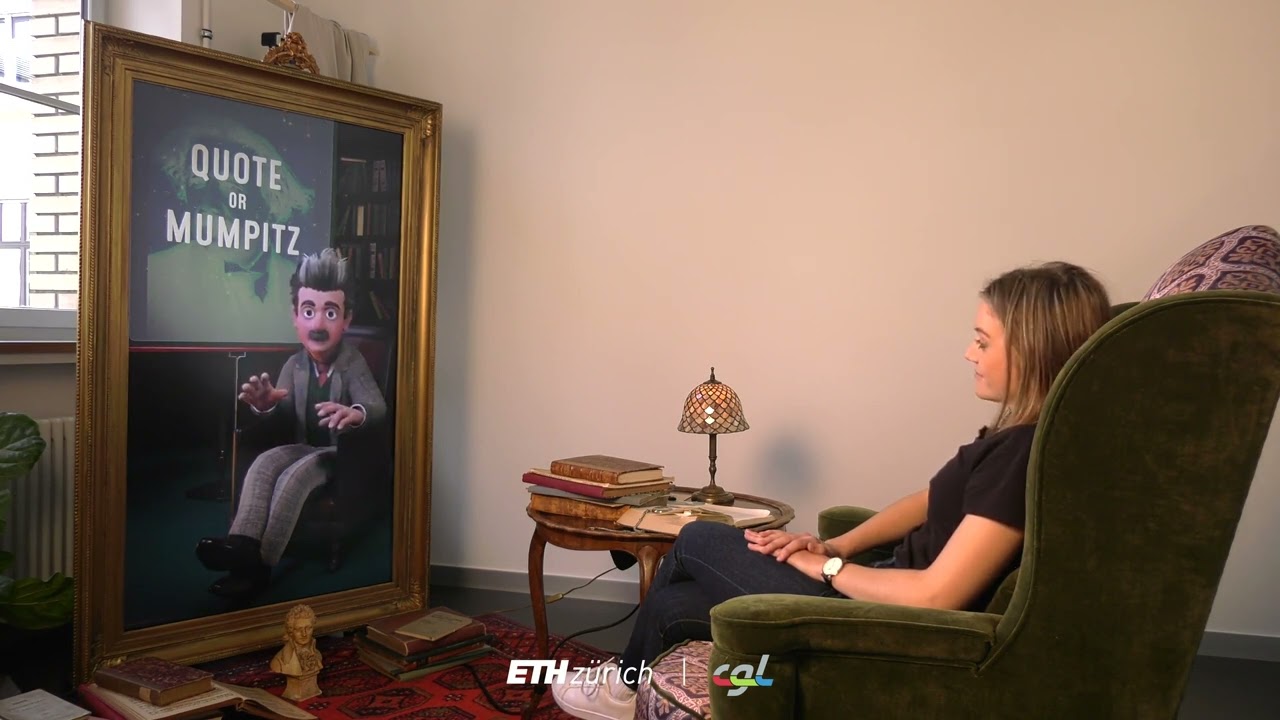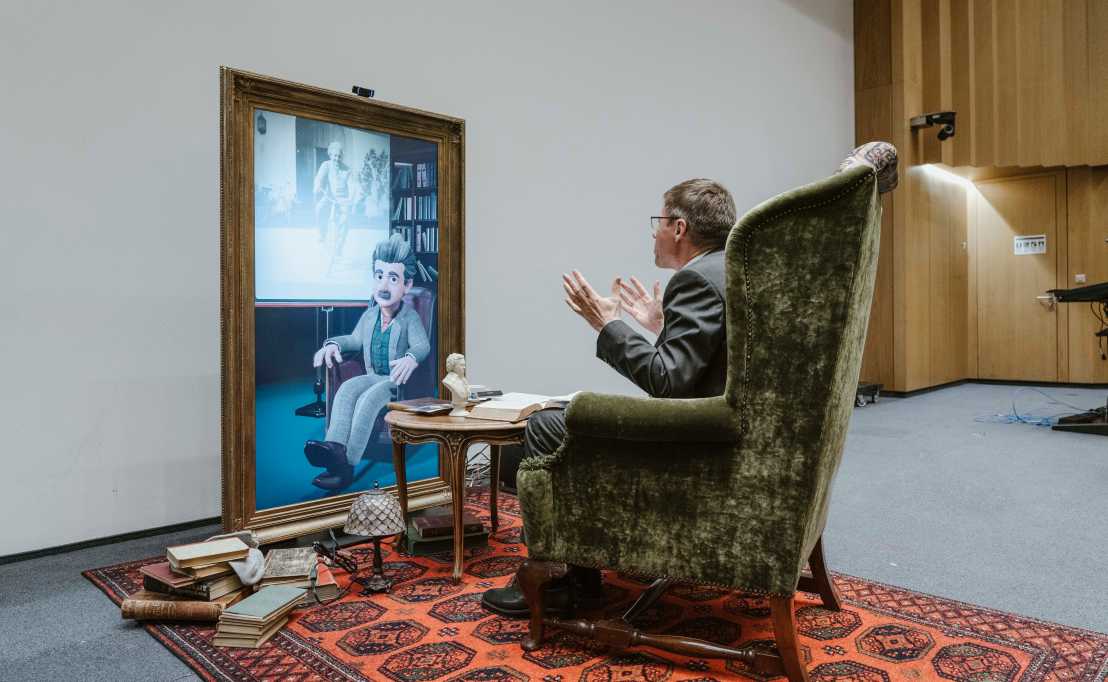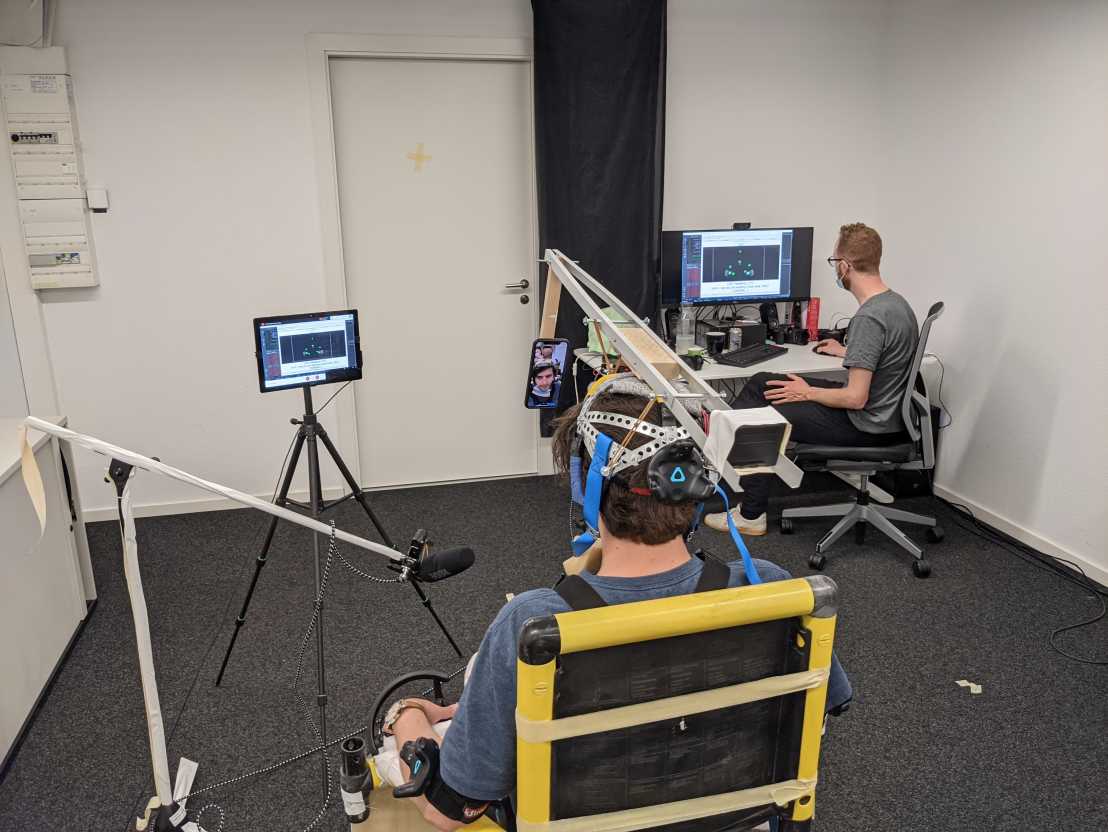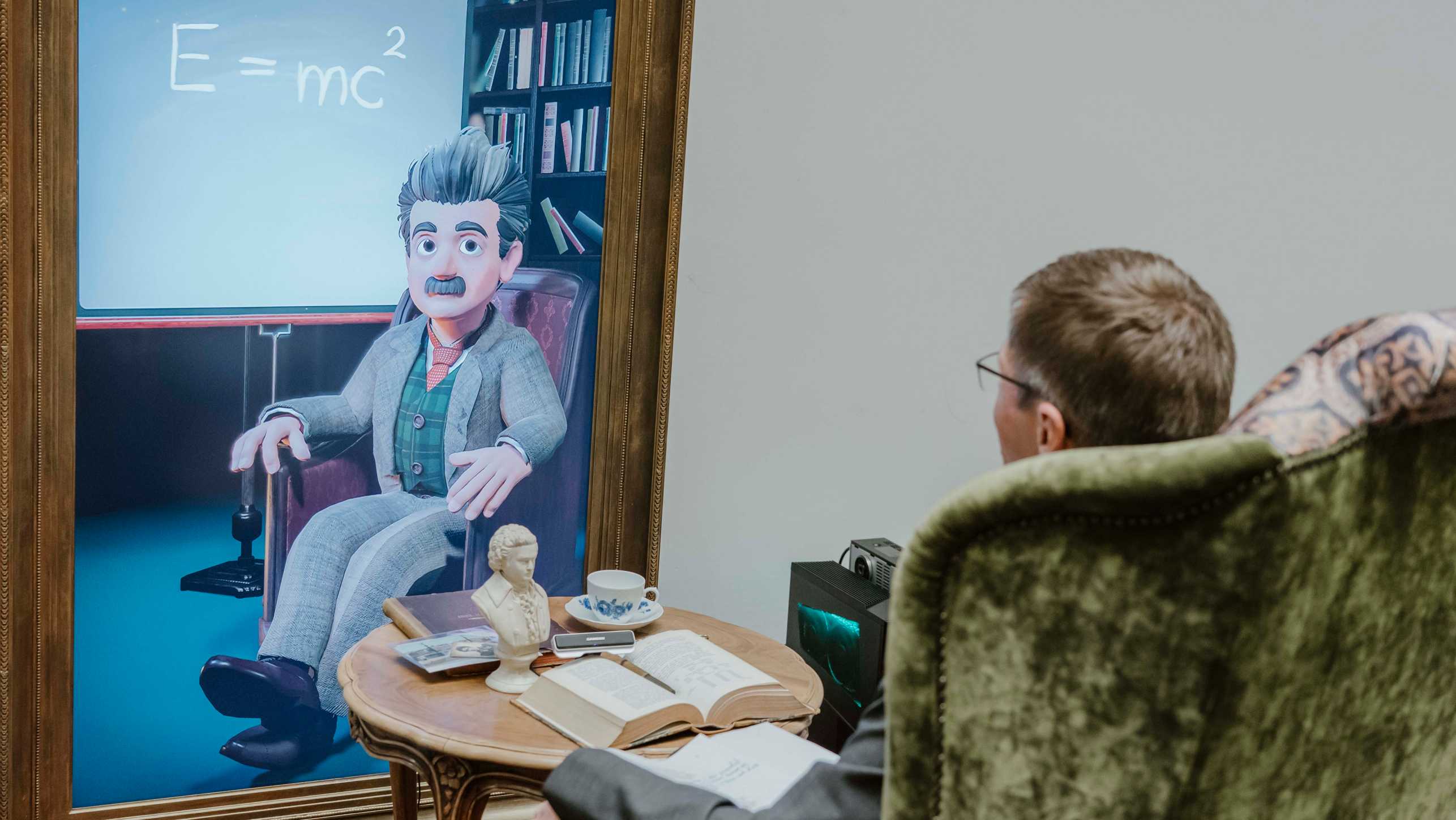Digital Einstein
To celebrate the centenary of Einstein’s Nobel Prize in Physics, ETH Zurich has harnessed expertise to bring its most famous alumnus to life as an animated character. The platform offers an opportunity to converse with a digital Einstein.

Anniversary tribute to a brilliant scientist
1921 is the year Albert Einstein was awarded the Nobel Prize “for his services to Theoretical Physics, and especially for his discovery of the law of the photoelectric effect”. Einstein studied at the Polytechnic, as ETH Zurich was then called, between 1896 and 1900, graduating with a diploma as a subject teacher of mathematics and natural sciences. Einstein also attained his doctorate in Zurich, at the external page University of Zurich. After an extremely fruitful period in Bern, Einstein returned to his alma mater as a professor of theoretical physics between 1912 and 1914, before moving to Berlin. While studying in Zurich, he made lifelong friends and met his future wife, Milena Maric.
To mark the 100th anniversary of his Nobel Prize, scientists came up with the idea of bringing ETH’s most famous alumnus to life in digital form. At the request of ETH President Joël Mesot, a team led by the computer science professor Markus Gross, together with external page ETH spin-off Animatico, developed an interactive platform where a digital Einstein talks about his years in Zurich. The platform now forms a new element in the university’s strategy to boost dialogue with society and, above all, to bring young people closer to science through this fascinating personality. Digital Einstein will be taking up his post at various locations around ETH (see Box 2); the platform is also designed for use at ETH events in Switzerland and abroad.
Where art meets high-tech

Einstein’s digital twin is every bit as communicative as he was. The 3D-animated character answers a wide variety of questions and will even throw the occasional counterquestion or witty remark at the person he is chatting with. A conscious decision was made for the digital figure’s 3D appearance to portray a young Einstein, in keeping with his time in Zurich. The “Digital Einstein” with his ability to see, hear and interact with the person in front of him is driven by a complex algorithmic system developed by external page ETH spin-off Animatico. Key technologies deployed here include dynamic rendering of the individual’s expressions and body language, natural language processing and intention recognition.
Both the screen and the comfortable armchair that constitute the visible parts of the platform are crammed with technology (see Box 1). A camera is used to scan people’s movements and reactions, and whenever someone addresses Einstein, microphones filter their voice out of the ambient noise. Special language-processing software then converts their words into text, analyses them, and generates the most appropriate answer – and all in real time.
The responses are drawn from a predefined dialogue structure, covering topics such as Einstein’s famous theories, his time as a student, and his friendships. Swiss comedian Karpi provided Einstein’s voice and devised the dialogue content. To ensure that the voice, facial expressions and gestures are perfectly synchronised, Animatico used a special recording technique. An algorithm guarantees a degree of randomness in the answers, which means the conversation is unpredictable and can take new turns.
Pioneering research on digital avatars

A completely free conversation, however, is still a distant prospect. Which is why researchers at Markus Gross’ Computer Graphics Laboratory are keen to further develop the first digital Einstein prototype created in the summer of 2021. Over the next few years, projects will be launched, for example as Master’s and doctoral theses, to address unresolved research questions.
Advances in artificial intelligence and computer graphics have spurred the development of avatars and chatbots worldwide. Einstein and other digital characters offer an opportunity to make interaction between humans and machines more intuitive and more accessible to people who are less tech-savvy or who have disabilities. The potential applications of such 3D technology are many. Digital humans might be deployed at ticket counters and hotel check-ins; they could also provide product advice and act as virtual coaches in healthcare settings.
Setup
The entire digital Einstein setup combines modern technology with furniture designed to represent the period when Einstein worked at the “Poly”. The materials used for the furnishings and furniture all meet fire safety requirements. The platform consists of:
• screen (102x180x35 cm)
• powerful computer with dedicated graphics card in an operating box (60x40x50 cm)
• custom-made armchair (100x80x130 cm) with integrated loudspeakers (B1 flame retardant fabric component)
• carpet (262x172 cm; B1 flame retardant)
• round table (65x65x53 cm) and various equipment.
The whole set can be packed into two standardised transport boxes. ETH members interested in the platform should contact Christina van Ligten, Office of the President, on +41 44 632 79 57 or via e-mail: christina.vanligten@sl.ethz.ch.
